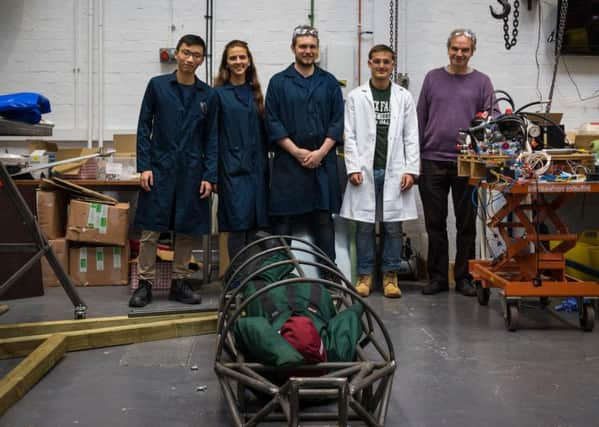Platform: All aboard the Hyperloop express


Hyperloop is the brainchild of Elon Musk, the South African billionaire at the origin of PayPal, Tesla and SpaceX. The Hyperloop consists of a passenger capsule (pod) that, while levitating using magnets or an air cushion, travels in a near vacuum environment at near 750mph. SpaceX, the aerospace manufacturer, was aware that the concept sparked interest in standalone engineers and teams who would contribute to its development, but would have insufficient resources to build their own vacuum tube tracks.
When the first SpaceX Hyperloop Pod Competition was announced in 2015, it led to the creation of the University of Edinburgh Hyperloop Team (“HypED”). Starting as a group of five friends, it soon expanded to host 30 students from Engineering and Arts. In January 2016, our modular design of the capsule won an award, signed by Elon Musk, which now proudly stands at our student union.
Advertisement
Hide AdAdvertisement
Hide AdOur technical team pushed forward and spent six months preparing a rigorous design for our own Hyperloop prototype that would surpass the utmost level of scrutiny SpaceX would receive it with. Following numerous presentations and safety briefings, HypED is officially the only British team, and one of four European teams, to race their prototype in the SpaceX II finals on 27-29 August 2017. We are currently performing the finishing touches of assembling our prototype, now named “Poddy McPodface”, which will be shipped to the US in mid August.
But with an ever changing political landscape, uncertainty on the economic outlook and the HS2 project under close public scrutiny, what is the place for a new transport technology?
With a growing awareness of the new Hyperloop system in Britain, our team reflected on the social and economic implications for a technology that is expected to have wide reaching socioeconomic impacts. Considering the vast inequalities between North and South, the stagnant productivity and ambitious environmental targets, our team has built a case for a London to Edinburgh route, passing through Manchester and Birmingham and leading to a travel time of 35 minutes between the two capitals.
Given the long construction timelines and the speed advantages, our route aims to complement the existing construction pipeline beyond 2030. The economic case was presented to Hyperloop One, the US company looking to select three routes worldwide and build them. We were the only student team to present as one of the 35 semi-finalists, from 2,600 entries.
Finally, alongside developing the technology and conduction a socio-economic pre-feasibility study, we are undertaking initiatives to engage young people in STEM (Science, Technology, Engineering and Mathematics) and engage university students in intradisciplinary work. We believe that the universities, as well as citizens, have a major role to play in the development of innovations.
Therefore, we encourage inquiries, comments and suggestions for developments so as to make the result of our work inclusive of all.
Enrique Cervero and Carolina Toczycka are members of the University of Edinburgh Hyperloop Team